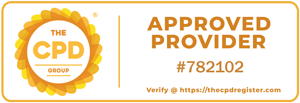Sara Ho-Le | Founder
Emergency Veterinary Education

Sara qualified as a registered veterinary nurse with the Royal College of Veterinary Surgeons in 2011. After working in clinical practice for several years, Sara returned to study in 2018 and completed the Certificate in Veterinary Nursing for Emergency and Critical Care (CertVNECC). In 2022 Sara obtained her Veterinary Technician Specialist qualification in Emergency and Critical Care through the Academy of Veterinary Emergency and Critical Care Technicians and Nurses (AVECCTN). Sara has worked in a variety of practices, including first opinion, specialist referral and emergency, university teaching hospitals and non-for-profit organisations in the United Kingdom and Australia. Sara’s professional interests include, emergency and critical care nursing, disease pathophysiology, anaesthesia and analgesia, wound care and in-clinic teaching and training. Sara has authored and delivered a variety of online and in-clinic modules, tutorials and courses for her own veterinary education business ‘Emergency Veterinary Education’, and for other educators and organisations.
Appearances:
Day 1 @ 13:55
Panel: Communication, - how to advocate for patients to veterinarians
Day 2 @ 13:30
'Prime the Pump’: Case based review of resuscitative fluid therapy for circulatory shock
- Review of circulatory shock
- Clinical signs
- Fluid therapy strategies
- Monitoring ‘end goals of resuscitation’
- Complications
Day 2 @ 13:55
Why is my patient breathing up?' Causes of respiratory distress in dogs and cats- case based approach
- Review of normal respiration
- Causes of tachypnoea in cats and dogs
- Emergency management and therapies
Contact us
Sponsorship Enquiries
Ellen.phelan@terrapinn.com
Speaking Enquiries
Amanda.liversage@terrapinn.com
Marketing Enquiries
natalie.mcclelland@terrapinn.com
Chinese Sales Enquiries
zhengyumeng@cccmhpie.org.cn
General Enquiries
Meg.Obrien@terrapinn.com





